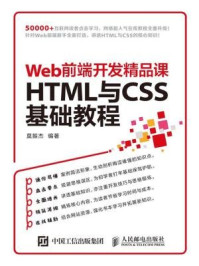




Traffic congestion results in a number of negative effects on:(1) Mobility .Travel delays and wasting time of passengers or goods reduce the efficiency of transportation systems and increase opportunity costs;(2) Safety .Higher probability of serious injuries and death crashes as a result of human fallibility in congested flows;(3) Sustainability .Increased travel time and oscillatory acceleration/braking maneuvers in traffic congestion induce significant environmental impacts,such as fuel consumption,greenhouse gas emissions,air pollution,noises,etc.
Road traffic flow is influenced by various random factors,including both external factors(e.g.,weather)and internal factors(e.g.,transportation facilities,vehicle characteristics,driver behaviors,etc.).These stochastic influences make deterministic traffic flow models difficult to accurately estimate and predict dynamic evolutions.To overcome this problem,numerous stochastic approaches were developed for continuous traffic flow on the basis of microscopic/macroscopic traffic flow models.Particularly,different kinds of drivers(e.g.,aggressive versus passive,young versus old,skilled versus greenhand,rigorous versus fatigued)run different kinds of vehicles(e.g.,cars versus trucks,buses)on the same road,and thus,traffic flow is heterogeneous.
Since headway/spacing/velocity perform fundamental roles in stochastic traffic flow modeling,it is significant to study their stochastic characteristics in traffic flow evolutions.According to Highway Capacity Manual 2000 (on page 48 of Transportation Research Board of the National Academies(2000)),
Definition 1.1 Headway (time headway, h )is the time,in seconds,between two successive vehicles as they pass a point on the roadway,measured from the same common feature of both vehicles.
Studies on headway distributions received continuous interests since the birth of traffic flow research,because of their wide applications ranging from measuring road capacity to scheduling traffic signals.Headway distribution model is one of the most well-known mesoscopic flow models,in which vehicles and driver behaviors are described by more aggregated terms instead of individual interaction rules.It is assumed that these headways are independent and identically distributed(i.i.d.)random variables.
Spacing is another important statistics in traffic flow modeling.According to Highway Capacity Manual 2000 (on p.56 of Transportation Research Board of the National Academies(2000)),
Definition 1.2 Spacing (space gap, s )is defined as the distance,in feet or meters,between two successive vehicles in a traffic lane,measured from the same common feature of the vehicles.
Numerous probability models have been proposed to fit the empirical distributions of headway/spacing(Branston 1976;Buckley 1968;Cowan 1975;Hoogendoorn and Bovy 1998;Kerner and Klenov 2006;Luttinen 1996;Ovuworie et al.1980;Thiemann et al.2008;Tolle 1976;Wasielewski 1974;Zhang et al.2007),such as Gaussian distribution,lognormal distribution,etc.Based on the statistical characteristics,we incorporate a Markov model that yields the steady-state headway/spacing distributions as those observed in practice to simulate transient-state statistics of road traffic for different driving scenarios,including highway traffic and urban street traffic.This stochastic model is in accordance with our daily driving experiences.
Traffic flows are often described by three macroscopic variables:traffic flow rate q (veh/h),traffic density ρ (veh/km),and mean velocity v (km/h).The relationships among the macroscopic variables and the aforementioned microscopic variables are q =3700/ h and ρ =1000/ s .The fundamental diagram(FD)is the most widely used model to describe the equilibrium flow-density relationship.But field observations show the possible inconformity between the wide scattering features of flow-density plot and the fundamental diagram assumption.Thus,it is necessary to establish a tight link and a statistical relationship between the spacing/headway distribution model and the wide scattering feature of flow-density plot because the stochastic fundamental diagram is more consistent in empirical measurements.
Traffic congestion performs temporal-spatial features observed from field traffic data.Many random factors influence empirical observations,such as driver characteristics,stochastic car-following behaviors,random headway/spacing perceptions and choices,weather and infrastructure conditions,time of day,etc.In particular,traffic congestion caused by on-ramp flow is one of the main influencing factors for highway mobility.From the macroscopic point of view,traffic breakdown phenomena show sudden transitions from free flow states to congested states(obvious velocity reduction)within a short period of time.The problem to describe the formation,evolution and dissipation of such congestions received increasing interests in the last decade.Since phase diagram approach provides a tool to categorize the rich congestion patterns and explain the origins of some complex phenomena at bottle-necks.To solve this problem via a minimum number of parameters and rules,we may need a concise temporal-spatial queueing model to depict traffic jams in trajectories by extending the Newell's simplified model.


